 W
WThe Anti-Comintern Pact, officially the Agreement against the Communist International, was an anti-Communist pact concluded between Nazi Germany and the Empire of Japan on 25 November 1936, and was directed against the Communist International (Comintern). It was signed by German foreign minister Joachim von Ribbentrop and Japanese ambassador to Germany Kintomo Mushakoji. Italy, Spain and other countries joined it until November 1941.
 W
WThe Armistice of Cassibile was an armistice signed on 3 September 1943 by Walter Bedell Smith and Giuseppe Castellano and made public on 8 September between the Kingdom of Italy and the Allies during World War II. It was signed at a conference of generals from both sides in an Allied military camp at Cassibile, in Sicily, which had recently been occupied by the Allies. The armistice was approved by both King Victor Emmanuel III and Italian Prime Minister Pietro Badoglio. The armistice stipulated the surrender of Italy to the Allies.
 W
WThe Armistice of Villa Giusti ended warfare between Italy and Austria-Hungary on the Italian Front during World War I. The armistice was signed on 3 November 1918 in the Villa Giusti, outside Padua in the Veneto, Northern Italy, and took effect 24 hours later.
 W
WThe Berlin Conference of 1884–1885, also known as the Congo Conference or West Africa Conference, regulated European colonization and trade in Africa during the New Imperialism period and coincided with Germany's sudden emergence as an imperial power. The conference was organized by Otto von Bismarck, the first chancellor of Germany. Its outcome, the General Act of the Berlin Conference, can be seen as the formalisation of the Scramble for Africa, but some scholars of history warn against an overemphasis of its role in the colonial partitioning of Africa and draw attention to bilateral agreements concluded before and after the conference. The conference contributed to ushering in a period of heightened colonial activity by European powers, which eliminated or overrode most existing forms of African autonomy and self-governance.
 W
WThe Treaty of Berlin was signed on 13 July 1878. In the aftermath of the Russian victory against the Ottoman Empire in the Russo-Turkish War of 1877–1878, the major powers restructured the map of the Balkan region. They reversed some of the extreme gains claimed by Russia in the preliminary Treaty of San Stefano, but the Ottomans lost their major holdings in Europe. It was one of three major peace agreements in the period after the 1815 Congress of Vienna. It was the final act of the Congress of Berlin and included Great Britain and Ireland, Austria-Hungary, France, Germany, Italy, Russia and the Ottoman Empire. Germany's Otto von Bismarck was the chairman and dominant personality.
 W
WThe Berne Convention for the Protection of Literary and Artistic Works, usually known as the Berne Convention, is an international agreement governing copyright, which was first accepted in Berne, Switzerland, in 1886.
 W
WThe Boxer Protocol was signed on September 7, 1901, between the Qing Empire of China and the Eight-Nation Alliance that had provided military forces ; after China's defeat in the intervention to put down the Boxer Rebellion. It is often regarded as one of the Unequal Treaties.
 W
WThe Treaty of Bucharest of 1916 was signed between Romania and the Entente Powers on 4 /17 August 1916 in Bucharest. The treaty stipulated the conditions under which Romania agreed to join the war on the side of the Entente, particularly territorial promises in Austria-Hungary. The signatories bound themselves to keep secret the contents of the treaty until a general peace was concluded.
 W
WThe Convention between Italy and Turkey, signed in Ankara on January 4, 1932, by the Italian Plenipotentiary, Ambassador Pompeo Aloisi, and the Turkish foreign minister Tevfik Rüştü Aras, settled a dispute that had arisen in the aftermath of the Treaty of Lausanne of 1923, about the sovereignty over a number of small islets and the delimitation of the territorial waters between the coast of Anatolia and the island of Kastellórizo, which was an Italian possession since 1921.
 W
WThe Convention Relative to the Preservation of Fauna and Flora in their Natural State, also known as the London Convention of 1933, was an early agreement among colonial powers for the conservation of nature. As one of the first general conservation agreement in Africa, and the first to specifically protect a plant species, it has been called the Magna Carta of wildlife conservation and "the high point of institutionalised global nature protection before the Second World War".
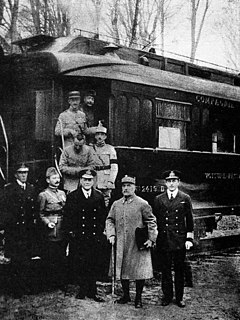 W
WThe Armistice of 11 November 1918 was the armistice signed at Le Francport near Compiègne that ended fighting on land, sea and air in World War I between the Allies and their last remaining opponent, Germany. Previous armistices had been agreed with Bulgaria, the Ottoman Empire and the Austro-Hungarian Empire. Also known as the Armistice of Compiègne from the place where it was signed at 5:45 a.m. by the Allied Supreme Commander, French Marshal Ferdinand Foch, it came into force at 11:00 a.m. Paris time on 11 November 1918 and marked a victory for the Allies and a defeat for Germany, although not formally a surrender.
 W
WThe Forced Labour Convention, the full title of which is the Convention Concerning Forced or Compulsory Labour, 1930 (No.29), is one of eight ILO fundamental conventions of the International Labour Organization. Its object and purpose is to suppress the use of forced labour in all its forms irrespective of the nature of the work or the sector of activity in which it may be performed. The Convention defines forced labour as "all work or service which is exacted from any person under the menace of any penalty and for which the said person has not offered himself voluntarily", with few exceptions like compulsory military service. The convention excludes "adult able-bodied males", to whom legal imposition of forced labour is allowed.
 W
WThe Franco-Italian Agreements were signed in Rome by both French Foreign Minister Pierre Laval and Italian Prime Minister Benito Mussolini on January 7, 1935.
 W
WThe Franco-Italian Armistice, or Armistice of Villa Incisa, signed on 24 June 1940, in effect from 25 June, ended the brief Italian invasion of France during the Second World War.
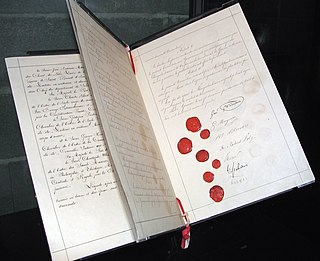 W
WThe First Geneva Convention for the Amelioration of the Condition of the Wounded in Armies in the Field, held on 22 August 1864, is the first of four treaties of the Geneva Conventions. It defines "the basis on which rest the rules of international law for the protection of the victims of armed conflicts." After the first treaty was adopted in 1864, it was significantly revised and replaced in 1906, 1929, and finally 1949. It is inextricably linked to the International Committee of the Red Cross, which is both the instigator for the inception and enforcer of the articles in these conventions.
 W
WThe First Geneva Convention for the Amelioration of the Condition of the Wounded in Armies in the Field, held on 22 August 1864, is the first of four treaties of the Geneva Conventions. It defines "the basis on which rest the rules of international law for the protection of the victims of armed conflicts." After the first treaty was adopted in 1864, it was significantly revised and replaced in 1906, 1929, and finally 1949. It is inextricably linked to the International Committee of the Red Cross, which is both the instigator for the inception and enforcer of the articles in these conventions.
 W
WThe Hague Conventions of 1899 and 1907 are a series of international treaties and declarations negotiated at two international peace conferences at The Hague in the Netherlands. Along with the Geneva Conventions, the Hague Conventions were among the first formal statements of the laws of war and war crimes in the body of secular international law. A third conference was planned for 1914 and later rescheduled for 1915, but it did not take place due to the start of World War I.
 W
WThe International Committee of Military Medicine (ICMM) is an international and intergovernmental organization consisting of more than one hundred states. The ICMM was established in 1921, in response to concerns over the lack of care provided during World War I. It was created to strengthen cooperation between the health services of the armed forces worldwide.
 W
WThe International Labour Organization (ILO) is a United Nations agency whose mandate is to advance social and economic justice through setting international labour standards. Founded in October 1919 under the League of Nations, it is the first and oldest specialised agency of the UN. The ILO has 187 member states: 186 out of 193 UN member states plus the Cook Islands. It is headquartered in Geneva, Switzerland, with around 40 field offices around the world, and employs some 2,700 staff from over 150 nations, of whom 900 work in technical cooperation programmes and projects.
 W
WThe International Opium Convention, signed at The Hague on January 23, 1912 during the First International Opium Conference, was the first international drug control treaty. It was registered in League of Nations Treaty Series on January 23, 1922. The United States convened a 13-nation conference of the International Opium Commission in 1909 in Shanghai, China, in response to increasing criticism of the opium trade. The treaty was signed by Germany, the United States, China, France, the United Kingdom, Italy, Japan, the Netherlands, Persia, Portugal, Russia, and Siam. The Convention provided, "The contracting Powers shall use their best endeavours to control, or to cause to be controlled, all persons manufacturing, importing, selling, distributing, and exporting morphine, cocaine, and their respective salts, as well as the buildings in which these persons carry such an industry or trade."
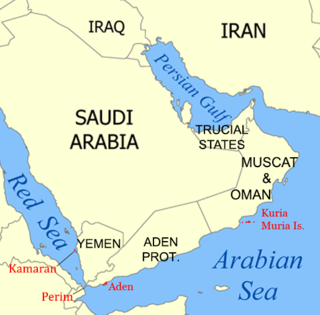 W
WThe Italo-Yemeni Treaty of 1926 was a treaty between the Kingdom of Italy and Mutawakkilite Kingdom of Yemen. The treaty was signed in September 1926 and was described as a friendship treaty. At the time, Italy was ruled by the fascist National Fascist Party with Benito Mussolini as head of government. The treaty recognized Imam Yahya Muhammad Hamid ed-Din as King of Yemen and acknowledged his claims to Aden. The treaty was renewed on October 15, 1937, after Italy had annexed Abyssinia.
 W
WThe Kellogg–Briand Pact is a 1928 international agreement in which signatory states promised not to use war to resolve "disputes or conflicts of whatever nature or of whatever origin they may be, which may arise among them". There were no mechanisms for enforcement. Parties failing to abide by this promise "should be denied of the benefits furnished by [the] treaty". It was signed by Germany, France, and the United States on 27 August 1928, and by most other states soon after. Sponsored by France and the U.S., the Pact renounced the use of war and calls for the peaceful settlement of disputes. Similar provisions were incorporated into the Charter of the United Nations and other treaties, and it became a stepping-stone to a more activist American policy. It is named after its authors, United States Secretary of State Frank B. Kellogg and French foreign minister Aristide Briand. The pact was concluded outside the League of Nations and remains in effect.
 W
WThe Klaipėda Convention was an international agreement between Lithuania and the countries of the Conference of Ambassadors signed in Paris on May 8, 1924. According to the convention, the Klaipėda Region became an autonomous region under unconditional sovereignty of Lithuania.
 W
WThe Lateran Treaty was one component of the Lateran Pacts of 1929, agreements between the Kingdom of Italy under Benito Mussolini and the Holy See under Pope Pius XI to settle the long-standing Roman Question. The treaty and associated pacts were named after the Lateran Palace where they were signed on 11 February 1929, and the Italian parliament ratified them on 7 June 1929. The treaty recognized Vatican City as an independent state under the sovereignty of the Holy See. The Italian government also agreed to give the Roman Catholic Church financial compensation for the loss of the Papal States. In 1947, the Lateran Treaty was recognized in the Constitution of Italy as regulating the relations between the state and the Catholic Church.
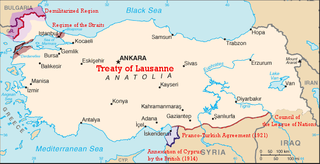 W
WThe Treaty of Lausanne was a peace treaty negotiated during the Lausanne Conference of 1922–23 and signed in the Palais de Rumine, Lausanne, Switzerland, on 24 July 1923. It officially settled the conflict that had originally existed between the Ottoman Empire and the Allied French Republic, British Empire, Kingdom of Italy, Empire of Japan, Kingdom of Greece, and the Kingdom of Romania since the onset of World War I. The original text of the treaty is in French. It was the result of a second attempt at peace after the failed and unratified Treaty of Sèvres. The earlier treaty had been signed in 1920, but later rejected by the Turkish national movement who fought against its terms. The Treaty of Lausanne ended the conflict and defined the borders of the modern Turkish Republic. In the treaty, Turkey gave up all claims to the remainder of the Ottoman Empire and in return the Allies recognized Turkish sovereignty within its new borders. It provided for the Greek-Turkish population exchange and allowed unrestricted civilian passage through the Turkish Straits.
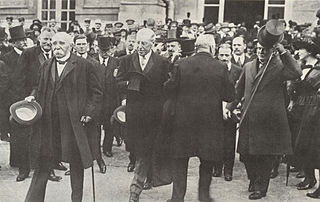 W
WLittle Treaty of Versailles or the Polish Minority Treaty was one of the bilateral Minority Treaties signed between minor powers and the League of Nations in the aftermath of the First World War. The Polish treaty was signed on 28 June 1919, the same day as the main Treaty of Versailles was signed, which is the reason for one of its names. It was the first of the Minority Treaties and served as a template for the subsequent ones; together with Articles 87-93 of Treaty of Versailles, it also formally established Poland as a sovereign and independent state on the international arena.
 W
WThe Locarno Treaties were seven agreements negotiated at Locarno, Switzerland, during 5–16 October 1925 and formally signed in London on 1 December, in which the First World War Western European Allied powers and the new states of Central and Eastern Europe sought to secure the post-war territorial settlement, in return for normalizing relations with the defeated German Reich. It also stated that Germany would never go to war with the other countries. Locarno divided borders in Europe into two categories: western, which were guaranteed by Locarno treaties, and eastern borders of Germany with Poland, which were open for revision.
 W
WThe Treaty of London, often called the Second Treaty of London after the 1839 Treaty, granted Luxembourg full independence and neutrality. It was signed on 11 May 1867 in the aftermath of the Austro-Prussian War and the Luxembourg Crisis. It had wide-reaching consequences for Luxembourg and for relations among Europe's Great Powers.
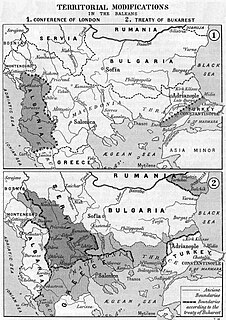 W
WThe Treaty of London (1913) was signed on 30 May following the London Conference of 1912–1913. It dealt with the territorial adjustments arising out of the conclusion of the First Balkan War. The London Conference had ended on 23 January 1913, when the 1913 Ottoman coup d'état took place and Ottoman Grand Vizier Kâmil Pasha was forced to resign. Coup leader Enver Pasha withdrew the Ottoman Empire from the Conference, and the Treaty of London was signed without the presence of the Ottoman delegation.
 W
WThe London Naval Treaty was an agreement between the United Kingdom, Japan, France, Italy and the United States, signed on 22 April 1930. Seeking to address a loophole in the formidable 1922 Washington Naval Treaty, it regulated submarine warfare and limited naval shipbuilding. Ratifications were exchanged in London on 27 October 1930, and the treaty went into effect on the same day. It was largely ineffective.
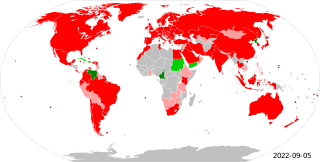 W
WThe Metre Convention, also known as the Treaty of the Metre, is an international treaty that was signed in Paris on 20 May 1875 by representatives of 17 nations. The treaty created the International Bureau of Weights and Measures (BIPM), an intergovernmental organization under the authority of the General Conference on Weights and Measures (CGPM) and the supervision of the International Committee for Weights and Measures (CIPM), that coordinates international metrology and the development of the metric system.
 W
WConcluded on 30 October 1918 and taking effect at noon the next day, the Armistice of Mudros ended hostilities in the Middle Eastern theatre between the Ottoman Empire and the Allies of World War I. It was signed by the Ottoman Minister of Marine Affairs Rauf Bey and British Admiral Somerset Arthur Gough-Calthorpe, on board HMS Agamemnon in Moudros harbor on the Greek island of Lemnos.
 W
WThe Munich Agreement or Munich Betrayal was an agreement concluded at Munich on 30 September 1938, by Nazi Germany, the United Kingdom, the French Third Republic and the Kingdom of Italy. It provided "cession to Germany of the Sudeten German territory" of Czechoslovakia. Most of Europe celebrated the agreement, because it prevented the war threatened by Adolf Hitler by allowing Nazi Germany's annexation of the Sudetenland, a region of western Czechoslovakia inhabited by more than 3 million people, mainly German speakers. Hitler announced it was his last territorial claim in Europe, and the choice seemed to be between war and appeasement.
 W
WThe Italo-Turkish or Turco-Italian War was fought between the Kingdom of Italy and the Ottoman Empire from September 29, 1911, to October 18, 1912. As a result of this conflict, Italy captured the Ottoman Tripolitania Vilayet (province), of which the main sub-provinces (sanjaks) were Fezzan, Cyrenaica, and Tripoli itself. These territories became the colonies of Italian Tripolitania and Cyrenaica, which would later merge into Italian Libya.
 W
WThe Pact of Steel, known formally as the Pact of Friendship and Alliance between Germany and Italy, was a military and political alliance between Italy and Germany.
 W
WThe Province of Carnaro was a province of the Kingdom of Italy from 1924 to 1943, then under control of the Italian Social Republic and German Wehrmacht from 1943 to 1945. It took its official name after the Gulf of Carnaro.
 W
WThe Treaty of Rapallo was a treaty between the Kingdom of Italy and the Kingdom of Serbs, Croats and Slovenes, signed to solve the dispute over some territories in the former Austrian Littoral in the upper Adriatic, and in Dalmatia.
 W
WThe Rome Protocols were a series of three international agreements signed in Rome on 17 March 1934 between the governments of Austria, Hungary and Italy. They were signed by Italian Prime Minister Benito Mussolini, Austrian Prime Minister Engelbert Dollfuss and Hungarian Prime Minister Gyula Gömbös. All three protocols went into effect on 12 July 1934 and were registered in League of Nations Treaty Series on 12 December 1934.
 W
WThe Treaty of Sèvres was a 1920 treaty signed between the Allies of World War I and the Ottoman Empire. The treaty ceded large parts of Ottoman territory to France, the United Kingdom, Greece and Italy and created large occupation zones within the Ottoman Empire. It was one of a series of treaties that the Central Powers signed with the Allied Powers after their defeat in World War I. Hostilities had already ended with the Armistice of Mudros.
 W
WThe Agreement of St.-Jean-de-Maurienne was an agreement between France, Italy and Great Britain, which emanated from a conference in a railway car at Saint-Jean-de-Maurienne on April 19, 1917, and signed by the allies between August 18 – September 26, 1917.
 W
WThe Svalbard Treaty recognises the sovereignty of Norway over the Arctic archipelago of Svalbard, at the time called Spitsbergen. The exercise of sovereignty is, however, subject to certain stipulations, and not all Norwegian law applies. The treaty regulates the demilitarisation of the archipelago. The signatories were given equal rights to engage in commercial activities on the islands. As of 2012, Norway and Russia are making use of this right.
 W
WThe Treaty of Neuilly-sur-Seine required Bulgaria to cede various territories, after Bulgaria had been one of the Central Powers defeated in World War I. The treaty was signed on 27 November 1919 at Neuilly-sur-Seine, France.
 W
WThe Treaty of Saint-Germain-en-Laye was signed on 10 September 1919 by the victorious Allies of World War I on the one hand and by the Republic of German-Austria on the other. Like the Treaty of Trianon with Hungary and the Treaty of Versailles with Germany, it contained the Covenant of the League of Nations and as a result was not ratified by the United States but was followed by the US–Austrian Peace Treaty of 1921.
 W
WThe Treaty of Trianon was prepared at the Paris Peace Conference and was signed in the Grand Trianon Palace in Versailles on 4 June 1920. It formally ended World War I between most of the Allies of World War I and the Kingdom of Hungary. French diplomats played the major role in designing the treaty, with a mind to establishing French-led coalition of the newly formed nations. It regulated the status of the independent Hungarian state and defined its borders generally within the ceasefire lines established in November–December 1918 and left Hungary as a landlocked state that included 93,073 square kilometres (35,936 sq mi), 28% of the 325,411 square kilometres (125,642 sq mi) that had constituted the pre-war Kingdom of Hungary. The truncated Kingdom had a population of 7.6 million, 36% compared to the pre-war kingdom's population of 20.9 million. Though the areas that were allocated to neighbouring countries had a majority of non-Hungarians, in them lived 3.3 million Hungarians – 31% – who were now in a minority status. The treaty limited Hungary's army to 35,000 officers and men, and the Austro-Hungarian Navy ceased to exist. These decisions and their consequences have been the cause of deep resentment in Hungary ever since.
 W
WThe Tripartite Pact, also known as the Berlin Pact, was an agreement between Germany, Italy and Japan signed in Berlin on 27 September 1940 by, respectively, Joachim von Ribbentrop, Galeazzo Ciano and Saburō Kurusu. It was a defensive military alliance that was eventually joined by Hungary, Romania, Bulgaria and Yugoslavia as well as by the German client state of Slovakia. Yugoslavia's accession provoked a coup d'état in Belgrade two days later. Germany, Italy and Hungary responded by invading Yugoslavia. The resulting Italo-German client state, known as the Independent State of Croatia, joined the pact on 15 June 1941.
 W
WThe Treaty of Versailles was the most important of the peace treaties that brought World War I to an end. The Treaty ended the state of war between Germany and the Allied Powers. It was signed on 28 June 1919 in Versailles, exactly five years after the assassination of Archduke Franz Ferdinand, which had directly led to the war. The other Central Powers on the German side signed separate treaties. Although the armistice, signed on 11 November 1918, ended the actual fighting, it took six months of Allied negotiations at the Paris Peace Conference to conclude the peace treaty. The treaty was registered by the Secretariat of the League of Nations on 21 October 1919.
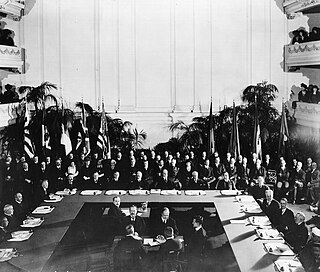 W
WThe Washington Naval Treaty, also known as the Five-Power Treaty, was a treaty signed during 1922 among the major nations that had won World War I, which agreed to prevent an arms race by limiting naval construction. It was negotiated at the Washington Naval Conference, held in Washington, D.C., from November 1921 to February 1922, and it was signed by the governments of the United Kingdom, the United States, France, Italy, and Japan. It limited the construction of battleships, battlecruisers and aircraft carriers by the signatories. The numbers of other categories of warships, including cruisers, destroyers and submarines, were not limited by the treaty, but those ships were limited to 10,000 tons displacement each.